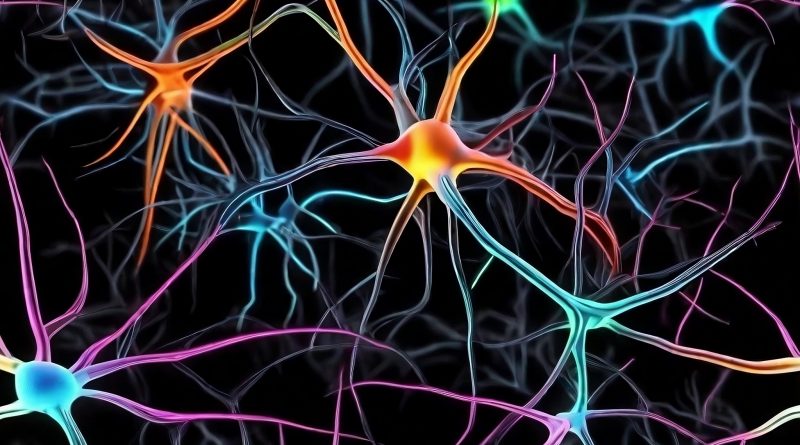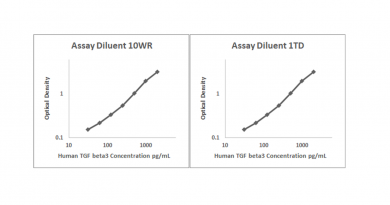New 3D Cell-based Model Unveils Insights on Immune Cells in Alzheimer’s Disease
Researchers have devised a novel human 3D model for Alzheimer’s Disease, enabling the study of immune cell involvement in the condition. Their investigation revealed a substantial increase in immune cell infiltration in brains with Alzheimer’s pathology, contributing to neurodegeneration and neuroinflammation. Furthermore, the team has pinpointed potential strategies to interrupt this process, offering promising avenues for the development of new therapies.
Alzheimer’s disease (AD) is linked to a decline in cognitive function, a consequence of neuronal death. This neuronal demise is often sparked by maladaptive immune reactions and heightened brain inflammation, set in motion by the presence of amyloid beta deposits and tau tangles—both hallmark features of AD. Furthermore, the intrusion of immune cells from outside the brain, notably T cells, into the brain can exacerbate the progression of AD pathology. Yet, investigating this phenomenon has proven to be a challenging endeavor.
A group of researchers, led by experts from Massachusetts General Hospital (MGH) is rising to the challenge. The team has engineered an innovative 3D human cell model replicating intricate interactions between brain cells and immune invaders. This advancement builds on previous 3D models of Alzheimer’s Disease outlined in Nature Neuroscience. This study was also supported by the Cure Alzheimer’s Fund and the JPB Foundation.
The research employed this cutting-edge 3D cell-based model to illustrate how, with the accumulation of Alzheimer’s pathology in the brain, specific immune cells known as CT8+ T-Cells surge into the brain, intensifying the destructive impact of neuroinflammation.
Additionally, the team unraveled the molecular mechanisms responsible for T-cell infiltration into the brain and demonstrated that inhibiting these mechanisms effectively mitigates the damaging consequences of T-cell infiltration.
These findings hold significant promise for the development of novel therapies targeting immune cell infiltration in the brains of Alzheimer’s patients, potentially revolutionizing the treatment landscape for this devastating condition.
Co-lead author Mehdi Jorfi, PhD, instructor in Neurology at MGH said:
“Enabled by cutting-edge microfluidic technology, this model opens up a window to observe infiltrating peripheral immune cells in action within 3D cell cultures; their interactions with brain cells; and their impact on neuroinflammation and neurodegeneration.”
Co–senior author Doo Yeon Kim, PhD, associate professor of Neurology at MGH, added:
“We hope our work contributes to developing a more physiologically relevant human Alzheimer’s disease model in a dish.”
The team’s novel model is a 3D human neuroimmune axis model, which features a dynamic composition of stem-cell derived neurons, astrocytes, microglia, and peripheral immune cells. This advancement represents an extension of the team’s previous work, which aimed to develop and validate 3D laboratory models of Alzheimer’s Disease (AD). These models more accurately mirror the characteristic plaques and tangles seen in the disease within a three-dimensional context, closely resembling the natural progression of the condition within the brain.
In their exploration of AD brain models, the research group not only observed heightened T cell presence but also uncovered a critical pathway involving a chemokine (CXCL10) and its corresponding receptor (CXCR3). This pathway plays a pivotal role in governing T-cell infiltration. By blocking this pathway, the researchers managed to substantially impede T-cell infiltration and subsequently mitigate neurodegeneration in the AD cultures they examined.
These significant findings offer fresh insights and potential therapeutic targets to address the infiltration of T-cells into the brains of Alzheimer’s patients. By doing so, there is the prospect of reducing the severe cognitive repercussions that Alzheimer’s disease inflicts, marking a substantial step toward more effective interventions for this devastating condition.
Joseph Park, PhD, instructor in Neurology at MGH, and co-lead author said:
“This multidisciplinary research approach identified the different behaviors of distinct cell types in this disease context, and we aim to shed light on the underlying mechanisms to identify strategies for intervention that could lead to more effective treatments.”
Additional targets may also be identified with continued experiments with this model.
Senior author Rudolph Tanzi, PhD, director of the Genetics and Aging Research Unit at MGH, said:
“Perhaps, what is most exciting about this study is that we have identified a new drug target on T-cells, outside of the brain, which would be more accessible to novel treatments, especially since it has been traditionally difficult to get drugs into the brain.”
Other co-authors include Clare K. Hall, Chih-Chung Jerry Lin, Meng Chen, Djuna von Maydell, Jane M. Kruskop, Byunghoon Kang, Younjung Choi, Dmitry Prokopenko, and Daniel Irimia.
Original Source – Press Release – Massachusetts General Hospital, published by Brandon Chase
Recommended Companies
More Headlines








